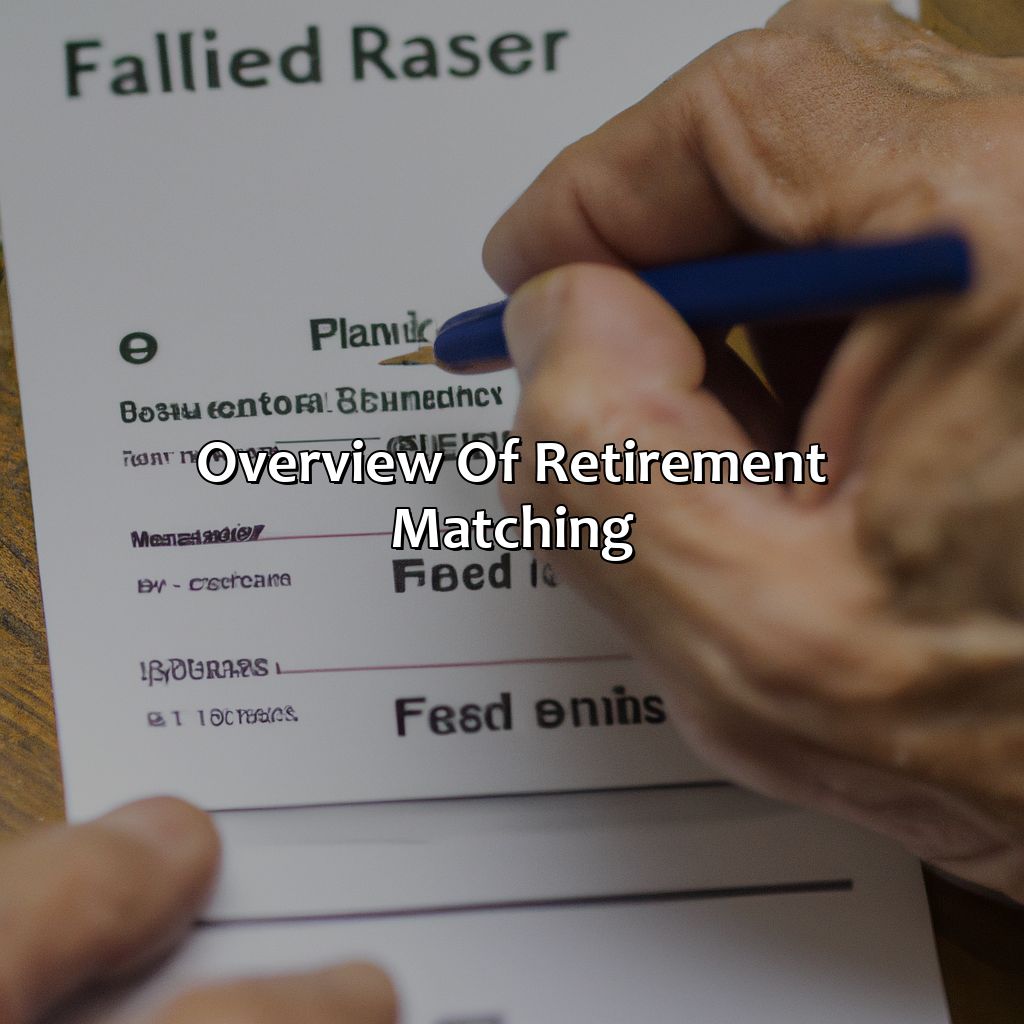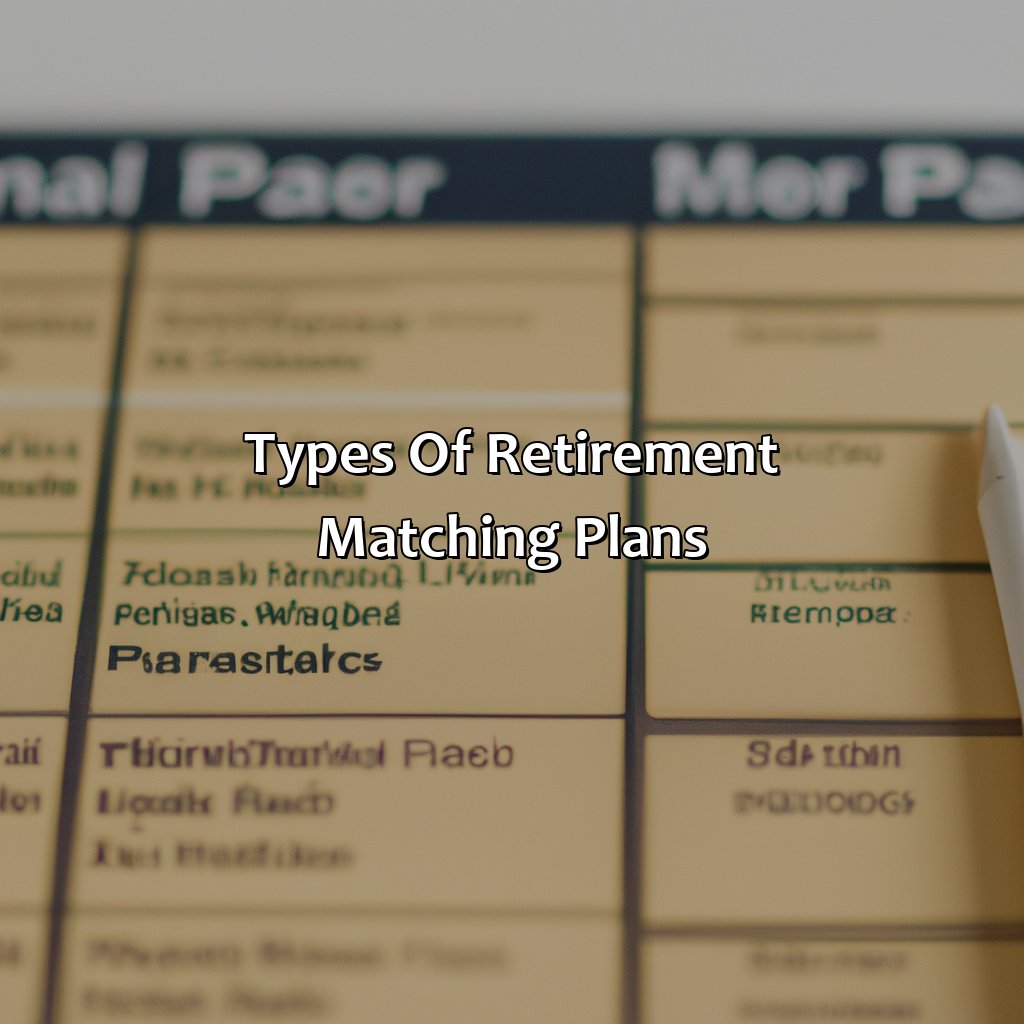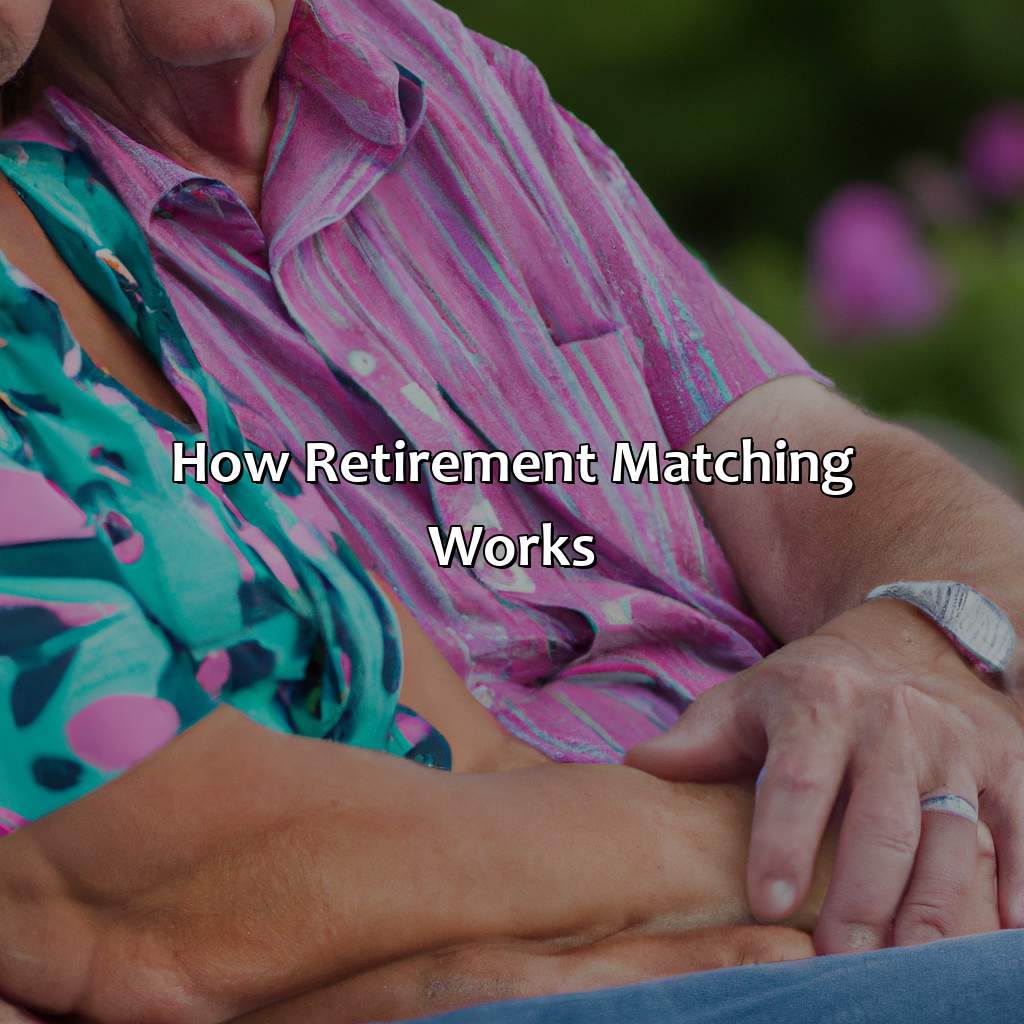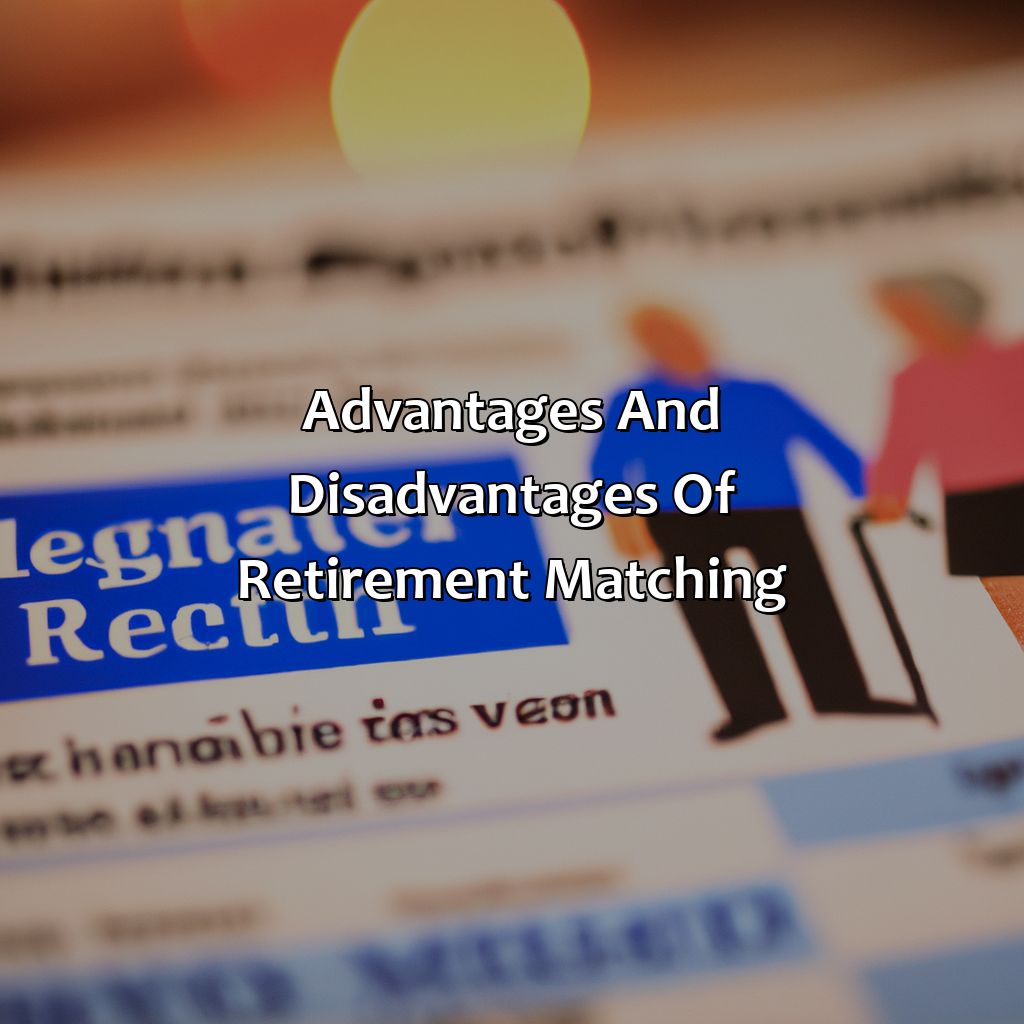How Does Retirement Matching Work?
Key Takeaway:
- Retirement Matching is a program in which an employer matches a percentage of an employee’s retirement contributions. This is a way for employers to incentivize employees to save for their own retirement.
- There are three types of retirement matching plans: defined contribution plans, defined benefit plans, and cash balance plans. Each plan has its own set of benefits and drawbacks, and employees should choose the one that aligns best with their retirement goals.
- How retirement matching works depends on a few factors, including employer contributions, employee contributions, vesting periods, and matching formulas. Employers can choose to match a specific percentage of an employee’s contributions, up to a certain amount.
Are you ready to prepare for retirement? Discover how matching works – the simple, yet powerful tool that can help you maximize your retirement savings. You’ll learn how to calculate the right amount to save, and ultimately reach your financial goals.
Overview of Retirement Matching
Retirement matching is when an employer contributes a set amount of money to an employee’s retirement account based on the employee’s contributions. This is a common benefit offered by employers to incentivize employees to save for their retirement. The matching percentage can vary depending on the employer’s policy and can be determined by a formula based on the employee’s salary or a set dollar amount per contribution.
To be eligible for retirement matching, an employee typically needs to meet certain criteria, such as working for the employer for a set amount of time or contributing a certain percentage of their salary to the retirement account. The matching contributions are typically made to a 401(k) or other qualified retirement plan, where the money can grow tax-free until retirement.
It’s important for employees to take advantage of retirement matching, as it can significantly increase their retirement savings. In addition, maximizing contributions can lower taxable income and potentially save money on taxes. Employers may also offer other retirement benefits, such as profit-sharing or pension plans, which employees should take into consideration when planning for their retirement.
To make the most of retirement matching, employees should aim to contribute at least the amount needed to receive the full matching contribution. They should also review their investment options and consider working with a financial advisor to ensure their retirement savings are on track to meet their long-term goals. By planning and taking advantage of retirement matching, employees can set themselves up for a more secure financial future.

Image credits: retiregenz.com by Harry Jones
Types of Retirement Matching Plans
Retirement Matching Plan Varieties – A Professional Insight
Retirement plans are a crucial aspect of an employee’s financial stability, and retirement matching plans add an extra layer of security. Here’s an expert view on the types of matching plans available.
Distinguishing Types of Retirement Matching Plans
- Traditional Matching Plan – Employers match a percentage of the employee’s contribution up to a specific limit
- Safe Harbor Matching Plan – Mandatory contribution matching for all employees, regardless of their own contributions
- Automatic Enrollment Safe Harbor Matching Plan – This variation enables employers to automatically enroll employees in the plan while maintaining mandatory matching contributions
- Non-Elective Contribution Safe Harbor Matching Plan – Employers contribute a fixed amount annually despite the employees’ contributions
Unique Details to Note about Retirement Matching Plans
Employers can adjust the vesting schedules for 401(k) plans to offer added protection for the employee’s retirement savings. The primary aim of vesting is to ensure that the employee remains in the company long enough to receive the full matching contribution benefit.
A True Story Depicting the Importance of Retirement Matching Plans
Consider a company named XYZ Inc. In 2009, they were struggling to retain top talent due to insufficient employee benefits. After incorporating a matching plan, they were able to attract more employees and reduce turnover rates by 25%. The employees were also glad due to the increased contributions towards their retirement accounts.

Image credits: retiregenz.com by Joel Woodhock
How Retirement Matching Works
Retirement Matching Explained
Retirement matching is a program implemented by employers to help employees save for retirement. Employers match a portion of their employees’ contributions, which is added to their retirement savings plan. The matching amount depends on the employer and the plan.
The matching contribution can be a percentage of the employee’s contribution or a flat dollar amount. Typically, there is a maximum amount the employer will contribute, which may vary by plan. Employees can increase their retirement savings by contributing more, and the employer will match that amount up to the maximum.
It is essential to understand the terms and conditions of your employer’s retirement matching program to take full advantage of the benefits. Some employers may require a minimum amount of time to participate in the program or have a vesting schedule, which means the employer’s contributions only become fully owned by the employee after a specific period.
Don’t miss out on the opportunity to maximize your retirement savings. Speak with your employer or human resources representative to learn about your retirement matching program’s specifics and start contributing today. Your future self will thank you.

Image credits: retiregenz.com by Adam Jones
Advantages and Disadvantages of Retirement Matching
Retirement Matching: Pros and Cons
Retirement Matching is a popular employer-offered benefit scheme where employers contribute to an employee’s retirement savings account. Retirement Matching has its advantages and disadvantages.
Advantages of Retirement Matching:
- Encourages Employee Retention
- Boosts Employee Morale
- Aids Employees’ Retirement Savings
- Renders Tax Benefits to the Employer
Disadvantages of Retirement Matching:
- Sustained Employment Not Guaranteed
- Cost Implications for Employers
- Employees Might Not Match Employer’s Contribution
- No Control Over Investment Decisions
Additionally, embracing Retirement Matching creates a stable workforce and favorable employer branding. Still, there’s much to consider before implementing it. For instance, what percent contribution should be offered? What’s the cost implication for employers?
Suggestion 1: As a starting point, employers should perform a cost-benefit analysis before offering Retirement Matching.
Suggestion 2: Inform Employees of Retirement Matching and the Benefits of Contributing Regularly to Retirement Savings Accounts.
By applying these suggestions, employers can create an educated workforce and monitor the effectiveness of the Retirement Matching plan. Thus, creating a win-win situation for all parties involved.

Image credits: retiregenz.com by David Arnold
Five Facts About How Retirement Matching Works:
Retirement matching is a benefit where an employer matches an employee’s contribution to a retirement plan up to a certain amount or percentage. (Source: Investopedia)
The most common type of retirement matching is a 401(k) plan where employers match a portion of the employee’s contribution. (Source: The Balance)
Employers may have different matching formulas, such as dollar-for-dollar or a percentage of the employee’s salary. (Source: Forbes)
Retirement matching can be a valuable way to increase retirement savings and reach financial goals. (Source: NerdWallet)
To take full advantage of retirement matching, employees should contribute at least enough to receive the full match from their employer. (Source: Fidelity)
FAQs about How Does Retirement Matching Work?
How does retirement matching work?
Retirement matching is a program in which an employer contributes an amount of money as a match to an employee’s contribution to their retirement savings plan, typically a 401(k) plan. The amount of the employer match and eligibility requirements vary from company to company.
What percentage of my retirement savings should I contribute to receive the full match?
Employers typically have a set percentage of an employee’s contribution that they will match, commonly between 3-6%. Some employers may match dollar-for-dollar up to a certain percentage of an employee’s salary. It’s important to contribute at least the minimum amount required to receive the full match to take full advantage of the program.
Does retirement matching vest immediately?
Vesting refers to the percentage of employer contributions that an employee is entitled to keep if they leave the company. Retirement matching may vest immediately, or there may be a vesting schedule, meaning the amount an employee is entitled to keep increases over time with employment. It’s important to review the vesting schedule to understand when you will become fully vested.
Is it possible to receive retirement matching if I am a part-time employee?
Employers have different eligibility requirements for retirement matching programs. Some may offer the program to all employees, including part-time workers, while others may have minimum hour requirements for participation. Check with your employer to see if you are eligible.
What happens if I exceed the maximum contribution limit of my retirement account?
The maximum contribution limit for a retirement account, such as a 401(k), can change year-to-year. If you exceed the limit, you may have to pay taxes on the excess contributions and any earnings those contributions generate. Your employer may also have to correct the excess contribution and any matching amount. It’s important to keep track of your contributions throughout the year and adjust as necessary to avoid exceeding the limit.
What happens to retirement matching if I leave my job?
If you leave your job, any contributions you made to your retirement account are yours to keep. However, the amount of the employer match you are entitled to depends on the vesting schedule. If you are leaving before becoming fully vested, you may only receive a portion of the employer match. If you are fully vested, you are entitled to the full amount of the employer match.
 Checkout this IRS Loophole
Checkout this IRS Loophole 





